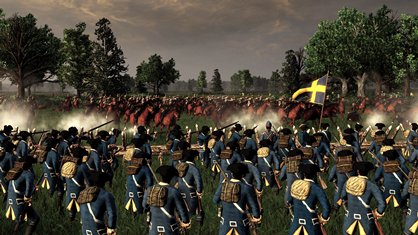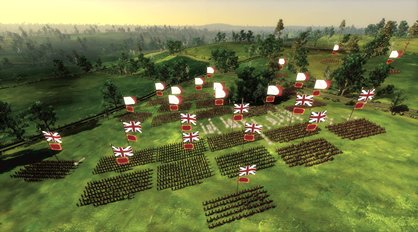Empire: Total War
We clock up some hands-on time with the latest code of Creative Assembly's epic RTS
War shouldn’t be this much fun. War should be hell and suffering, the debasement of mankind. It should be scooping beans from a can with the rib of a dead comrade and then swallowing it into your dysenteric stomach. But not fun. Only Empire, Creative Assembly’s most ambitious and epic Total War game to date, is just that. Fun. How do we know this? Because we’ve just spent two hours playing the latest code, and as our fingers fumble to strike the correct keys to type these words, we can’t help feel that Empire has the potential to utterly eclipse its illustrious predecessors.

During our playtest, we sampled Empire’s Road to Independence campaign: a series of bite-sized, story-driven episodes based on the American War of Independence. Divided into four chapters, The Road to Independence is likely to offer a more focused experience for newcomers daunted by the prospect of diving straight into the largest Total War turn-based campaign to date. Episode one begins circa 1607, with you marshalling the British as they try to gain a foothold in the US and hold off the natives, who’ve impertinently lived there for many thousands of years without a letter of permission from His Royal Highness.
Chapter two sees the natives on the back foot, but augmented by the military might of the French. (Stop snickering. The French were quite the military power back then.) As the Brits you must defeat this unlikely alliance in short order. Chapter three tasks you with leading the Americans to victory over the Brits in the War of Independence, and it was this episode that provided the setting forour session.
Unlike the main campaign, The Road to Independence isn’t just an open sandbox, as each chapter is punctuated by CGI cutscenes detailing the birth of the modern-day US. While purists may scoff, the cutscenes we witnessed were adequate proof that the plot should add an extra layer of depth and meaning to your actions. Also readily apparent was the more focused nature of these episodes, making them ideal for newcomers before they’re thrown into the main campaign in the final fourth chapter.

Chapter three kicked off with a real-time 3D recreation of the Battle of Bunker Hill, an epic clash between the Brits and Americans on an undulating battlefield dotted with patches of forest. Playing as the sovereignty-seeking Yanks, our heavily outnumbered forces began atop a hill. The interface, familiar yet distinctively different from Medieval II, took just seconds to learn, allowing hostilities to quickly commence.
Calling upon nearly a decade of Total War experience, we arrayed our troops at the hill summit, though one fundamental difference forced us to reassess our tried and tested tactics. While cannons and muskets featured in Medieval II, they were so wayward as to verge on useless. Empire’s gunpowder weapons now have accuracy to match their power, creating a new set of variables when outlining your battle plan.
Sign up to the GamesRadar+ Newsletter
Weekly digests, tales from the communities you love, and more


